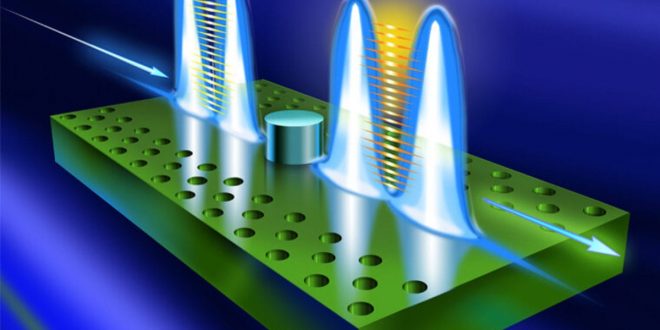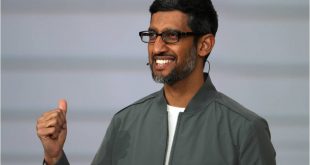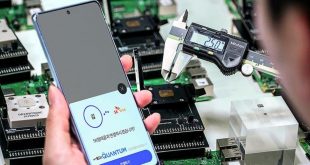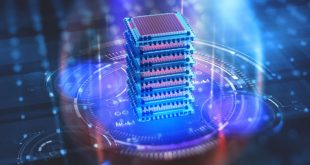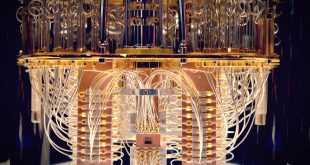Recent studies have provided a solution to the puzzle of optical Quantum Computing problems. Professor Jung Tsung Shen created a predictable, maximum fidelity quantum gate using an optical gate that employs a new type of light.
Effectiveness is improved by order of magnitude above existing logic gate technologies. As much as 97% of the fidelity can achieve in the ideal case, Shen said.
He accomplished this by discovering a new form of a quantum photonic state known as photonic dimers, which are both spatially and frequency-entangled.
The existence of these new forms of light was proved experimentally by him in 2013, and he has since been exploring their application.
Two-bit logic gates can be designed in many ways mathematically. The different designs are referred to as equivalents.
A solid-state logic gate designed by Shen is being tested to see if it can perform under moderate conditions. According to him, results have been positive so far.
The missing piece of optical quantum computing has been discovered.
Researchers at Washington University found the missing piece to the photon computing puzzle at the McKelby Institute of Technology.
A researcher at the Department of Electrical Systems Engineering at Preston M. Green, Jung-Tsung Shen, developed a new form of light that incorporates deterministic and fidelity quantum gates.
There is an order of magnitude increase in efficiency over current technology with this new logic gate.
According to Shen, there can be as much as 97% fidelity in an ideal case.
His research was presented in the journal Physical Review A in May 2021.
DOI: 10.1103 / PhysRevA.103.052610. Because the anomalous features of superposition quantum technologies may hold many properties simultaneously, quantum computers are considered powerful computers.
In a non-classical correlation, the entanglement of two particles exists in two states simultaneously. It’s me. Despite their physical separation, they behaved in the same way.
For a classical computer, a voltage determines a bit (either 1 or 0). However, quantum computers use electrons as “qubits,” which are equivalent to quantum bits.
The properties of electrons enable them to perform a wide range of tasks. By interacting with magnetic or electric fields, electrons can be easily manipulated and manipulated.
Interactions can entangle a pair of bits. Quantum mechanics is revealed as a wilderness.
It is also problematic that they tend to interact. It can be difficult to truly control electrons when stray magnetic fields and power lines influence them.
In recent years, several scientists have studied the possibility of using photons instead of electrons as qubits. Light can create a platform for computers to have a real impact, argues Shen.
Photons are uncharged, so the opposite can also happen. The environment is not affected by photons the way electrons are.
Besides, it was also hard to generate effective (ad hoc) interactions between photons. Tradition dictated this.
The photons exited the logic gate in less than a decade, and the scientists did not need to get entangled to measure them as they exited. I discovered that I acted in this manner.
Quantum mechanics’ wildest manifestation is the uniqueness of measurement.
Despite its apparent simplicity, quantum mechanics is full of surprises, Shen said.
It was not groundbreaking at all to discover the measurements. Due to the intertwining of photon pairs, one pair of photons was produced for every a million.
Shen says that though research has improved since then, “computers still must perform millions and billions of operations per second.”.
He was capable of building this type of logic gate with the same kind of efficiency because of the finding of quantum photonic states, which are photonic dimers connected by both areas and frequency.
These structures were experimentally proven in 2013, and he has discovered a new way of using light since then.
The entrance and exit of a single photon do not involve any particular actions. When a photon combines with another, “it was then that we predicted that they would become a photonic dimer.”. The new state proved to be significant.”
Two-bit logic gates can be designed in many ways mathematically. Equivalents are different designs that have the same purpose. Control phase gates or control Z gates are the logic gates designed by Shen and his group.
In the control phase gate, the primary responsibility is to hold the downstate of the two photons containing the two outgoing photons.
The classic circuit does not have a minus sign, Shen said. “But the minus sign is crucial for quantum computing.”
“Quantum mechanics is not difficult, but it is full of surprises.”—Jung Tsun Sheng
A logic gate can form a photonic dimer when two photons represent two bits, Shen explained.
The correct sign for the quantum photonic state’s output sequence since optical logical operations need the proper signal.
University of Michigan researchers have tested Shen’s solid-state logic gate design to ensure that it can be utilized in moderately noisy environments. In his opinion, the results so far are encouraging.
It may seem confusing to most people, but it was evident as a day to those who know.
He described it as a puzzle. If you do it, you will know once you see it that it’s right. “It’s never easy, but it’s always worth the effort.”
Zihao Chen, Zhou, Jung-Tsung, Pei-Cheng Ku, and Duncan Steel presented a two-photon control phase gate utilizing a photonic dimer in the May 21 edition of The Physical Review A.
A National Science Foundation grant has funded this study under grant numbers 1608049 and 1838996. A RAISE (Quantum leap) award also supported this work.
In the McKelby Research Institute at Washington University, students are encouraged to perform independent research and teach under an educational faculty focused on scientific quality, innovation, and cross-disciplinary collaboration.
McKelvey’s College of Engineering includes top-ranked completion of research courses across disciplines, including biomedical engineering, environmental engineering, & computer technology, and one of the nation’s highly competitive undergraduate programs.
There are 140 full-time faculty members and 1,387 undergrads, 1,448 graduates, and 21,000 alumni at the university as we work to solve some of the nation’s most pressing challenges.
Through their education, students develop leadership and innovation skills. The purpose of our organization is to spur economic growth in the St. Louis region and beyond.
Computers have traditionally been built on the power of the bit, which is a tiny transistor on a chip that symbolizes 1 or 0.
An equivalent of the quantum bit is the qubit. Quantum bits have the advantage of being in more than one situation at once. Making them capable of processing functions exponentially faster than classical computers.
Up to now, quantum computers have primarily been built using superconducting wires chilled to near absolute zero or laser traps containing trapped ions.
These approaches, however, face certain limitations, namely the qubits’ high sensitivity to environmental conditions.
The entanglement of qubits is necessary for a quantum computer to work, and then as the quantity of qubits rises, those variables are much more likely to compound and disrupt it.
In addition, a more recent development is the use of a photon as an optical qubit for quantum encoding and the integration of the components 22 necessary to do it onto photonic integrated circuits (PICs).
Assistant professor Galan Moody of the UC Santa Barbara College of Engineering’s Department of Electrical and Computer Engineering received the U.S. Defense University Research Instrumentation Program (DURIP) Award.
Integrated Air Force Scientific Research Office and Defense Department. He will be able to create a quantum photonic computer test platform due to the award, performing his studies in a lab in the recently finished Henley Hall, where the Center for Energy Efficiency’s Institute for Energy Efficiency has transferred.
Quantum computers and quantum technologies within the scope of photonics are both extremely efficient.
A quantum computer built by John Martinis at UCSB’s Goleta lab was used by Google to “demonstrate quantum supremacy” in fall 2019.
Using Sycamore, the business stated that it could perform tests that would require supercomputers thousands of years to finish in 200 seconds.
Using a tabletop experiment, a Chinese team reported that, with a quantum computer based on photons, “you can accomplish in two hundred seconds what would normally take thousands of years,” a super-computer more like 2.5 billion years to accomplish,” Moody says.
A further advantage of photonics is that it naturally scales up to thousands or even millions of components using the wafer-scale fabrication technology developed by classical photonics.
Today’s most sophisticated PICs have approximately 5,000 components and may be expanded by a factor of two or four utilizing current manufacturing processes, which is equivalent to the status of digital electronics in the 1960s and 1970s.
Moody’s team is creating a material platform made of gallium arsenide and silicon dioxide to accomplish its job, which will be highly effective than similar systems since it is made of gallium arsenide & silicon dioxide.
Researchers recently published a paper in the March 4 issue of PRX Quantum demonstrating that their quantum light source is much more efficient than any existing on-chip light source.
Computing with photons is known as optical computing. To generate photons, diodes or lasers must emit them. Photons are essentially massless and extremely fast. A photon represents the flow of data in a computer in place of electrons.
An individual photon’s interaction with matter and light is described in quantum optics. Controlling these interactions accurately allows experimentalists to test fundamental physics and apply quantum physics to technological advancements.
Quantum computers based on photons have exceeded the performance of even the fastest classical computers for the first time. Unlike a traditional computer made of silicon processors, Jiŭzhāng utilizes lasers, mirrors, prisms, and photon detectors.
Google’s quantum computer can complete a computation that would take the largest and most efficient computer in just under 10,000 years. One hundred fifty-eight million times faster than the fastest supercomputer globally, Google’s quantum computer is.
A significant advantage of an optical computer is its high density, small size, low junction heating, high speed, dynamic scalability, reconfigurability into smaller / larger networks/topologies, massively parallel computing capability, and AI applications.
 Next Tech Magazine Get The Latest Technology Updates
Next Tech Magazine Get The Latest Technology Updates
